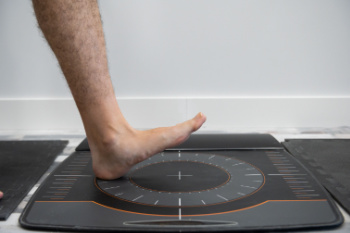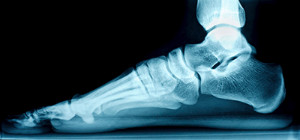Items filtered by date: May 2024
The Benefits of a Gait Assessment

A gait assessment is a valuable tool used to analyze how a person walks or runs. It is typically performed to identify biomechanical issues, musculoskeletal imbalances, or abnormalities that may contribute to pain, discomfort, or reduced mobility. During a gait assessment, a podiatrist observes various aspects of the individual's walking or running pattern, including stride length, foot placement, and overall body alignment. Common abnormalities that may be detected include overpronation or excessive inward rolling of the foot, supination or outward rolling of the foot, leg length discrepancies, and asymmetrical gait patterns. Identifying these abnormalities through a gait assessment allows podiatrists to develop personalized treatment plans tailored to address the specific needs of the individual. This may include recommendations for footwear, custom orthotic devices, and exercises to improve strength and flexibility. If you would like to understand how your walking or running can be improved to lessen discomfort, it is suggested that you schedule an appointment with a podiatrist for an evaluation and gait assessment.
If you have any concerns about your feet, contact one of our podiatrists from Podiatry Associates of Texas. Our doctors can provide the care you need to keep you pain-free and on your feet.
Biomechanics in Podiatry
Podiatric biomechanics is a particular sector of specialty podiatry with licensed practitioners who are trained to diagnose and treat conditions affecting the foot, ankle and lower leg. Biomechanics deals with the forces that act against the body, causing an interference with the biological structures. It focuses on the movement of the ankle, the foot and the forces that interact with them.
A History of Biomechanics
- Biomechanics dates back to the BC era in Egypt where evidence of professional foot care has been recorded.
- In 1974, biomechanics gained a higher profile from the studies of Merton Root, who claimed that by changing or controlling the forces between the ankle and the foot, corrections or conditions could be implemented to gain strength and coordination in the area.
Modern technological improvements are based on past theories and therapeutic processes that provide a better understanding of podiatric concepts for biomechanics. Computers can provide accurate information about the forces and patterns of the feet and lower legs.
Understanding biomechanics of the feet can help improve and eliminate pain, stopping further stress to the foot.
If you have any questions please feel free to contact our offices located in Arlington Weatherford, Mineral Wells, and Farmers Branch, TX . We offer the newest diagnostic and treatment technologies for all your foot and ankle needs.
Benefits and Drawbacks of Flat Foot Surgery

Surgery for flat feet, also known as flatfoot reconstruction, presents individuals with both advantages and disadvantages to consider before making a decision. On the positive side, surgery can correct structural abnormalities, realign bones and tendons, and restore the arch of the foot, potentially alleviating pain and improving mobility. For individuals experiencing severe symptoms or those whose quality of life is significantly affected by flat feet, surgery can offer long-term relief and enhanced functionality. However, it is essential to weigh the potential drawbacks. Surgery entails inherent risks, including infection, nerve damage, and prolonged recovery periods. Additionally, the success of the procedure may vary, and there's no guarantee of complete symptom resolution. Furthermore, undergoing surgery requires a commitment to post-operative rehabilitation and lifestyle adjustments, such as avoiding high-impact activities and wearing supportive footwear. If you have flat feet that are causing you discomfort, it is suggested that you consult a podiatrist who can help you determine if surgery is right for you.
Foot surgery is sometimes necessary to treat a foot ailment. To learn more, contact one of our podiatrists of Podiatry Associates of Texas. Our doctors will assist you with all of your foot and ankle needs.
When Is Surgery Necessary?
Foot and ankle surgery is generally reserved for cases in which less invasive, conservative procedures have failed to alleviate the problem. Some of the cases in which surgery may be necessary include:
- Removing foot deformities like bunions and bone spurs
- Severe arthritis that has caused bone issues
- Cosmetic reconstruction
What Types of Surgery Are There?
The type of surgery you receive will depend on the nature of the problem you have. Some of the possible surgeries include:
- Bunionectomy for painful bunions
- Surgical fusion for realignment of bones
- Neuropathy decompression surgery to treat nerve damage
Benefits of Surgery
Although surgery is usually a last resort, it can provide more complete pain relief compared to non-surgical methods and may allow you to finally resume full activity.
Surgical techniques have also become increasingly sophisticated. Techniques like endoscopic surgery allow for smaller incisions and faster recovery times.
If you have any questions please feel free to contact our offices located in Arlington Weatherford, Mineral Wells, and Farmers Branch, TX . We offer the newest diagnostic and treatment technologies for all your foot and ankle needs.

